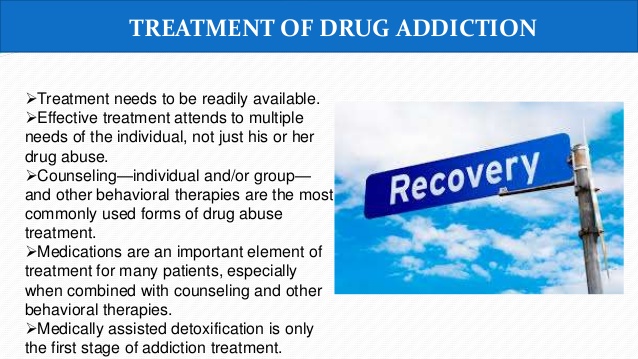This request can be delivered with the guarantee that if anything turns up that the therapist feels the parent has the right or need to know, the therapist will deal with the client to choose how to inform the parent. If the moms and dad or guardian agrees, and after that adult leaves the session, the therapist goes over confidentiality again with the minor customer to be sure the client understands, to see how the customer responds without the parent present, and to deal with any concerns the customer may have.
The therapist informs the customer that treatment ideally involves the two of them interacting to come up with goals that are meaningful to the customer and appear feasible to both participants. Likewise, as objectives are developed, they will identify and select workable methods for attaining the treatment objectives. In the procedure of choosing and approaching the client's objectives, the client can expect the therapist's nonjudgmental attention and support for a given time period regularly.
The therapist further demands that the client share thoughts and feelings about the course of treatment as it develops, interacting the customer's right to expect the therapist's responsiveness to the client's feedback. how to get opiate addiction treatment discreetly. This specific consideration of what the customer can anticipate from treatment is particularly useful with those compound users who get in treatment with some bitterness at the possibility of being told what they should do (how to get homeless son meth addiction treatment in california).

Impending threat to self or others, and threat of severe medical or psychosocial consequences of continuing substance usage or stopping too suddenly all demand the therapist's intervention and possible referrals. Addressing threat elements takes very first priority whether or not the threats are direct consequences of the client's substance usage (Washton Visit website and Zweben, 2006).

The therapist shows what is anticipated of customers along with what customers can expect in treatment. For a general example, therapists usually inform customers of time borders for therapy sessions to start and end. As soon as substance use concerns become a focus in therapy, clear expectations ought to be interacted about reporting compound usage.
Peer-review Articles On How To Create Personal Model For Addiction Treatment for Beginners
The therapist also lets clients know they can anticipate a nonjudgmental action to clients' truthful reports of what they are doing, using, believing, and sensation. The abstaining expectation. With regard to the very first expectation of concerning session "clean and sober," therapists should specify according to their individual positions on this problem, taking the client's reaction to this expectation into factor to consider.
Others expect at least twenty-four hours devoid of substance usage prior to a session to avoid the possibility that the customer will be experiencing a hangover or severe withdrawal during a session. Still other therapists firmly insist that the customer totally forego recreational substance use throughout the course of therapy. In some settings, customers are asked or needed to agree not to utilize any mind or state of mind changing compounds as a condition of treatment.
Appropriate psychoeducation does not suggest simply informing the customer of expectations, but likewise involves supplying a reasoning and being responsive to the customer's reactions. The therapist describes that coming "sober" to sessions is anticipated for a couple of reasons. First, the customer is less most likely to be able to efficiently use and remember the time in session if the client is under the impact of drugs or alcohol.
Third, the customer's travel to and from the session is risky if the customer has been utilizing substances that day. The inspiration of clients who willingly agree to this condition is usually reinforced by such reasoning. For clients doubtful of the requirement to comply or lacking self-confidence in ability to comply, the therapist's specified reasoning offers a springboard Substance Abuse Center for further conversation.
Clients might attempt to encourage the therapist that being "high" is actually a typical frame of mind for them and therefore is not a barrier to their operating. Or customers may say they will try but can not guarantee, or may concur while nonverbally interacting that they do not take the requirement seriously.
Can Meet Develop Ed When They Are Going Through Sexual Addiction Treatment? Things To Know Before You Buy
If the client stays reluctant to devote to avoiding compound use on the day session, the therapist has the alternative of raising the topic of possible referral to more extensive treatment. The therapist typically differentiates in between expectation of client effort and insistence on outcome. To put it simply, the therapist interacts the expectations that the customer will make a good faith effort to abstain from compound use prior to therapy sessions and demands that the client cancel the session if the client has been using drugs or consuming that day.
It is often helpful, especially with customers who inquire straight, to inform them early in treatment that if the customer is not able to make or maintain the commitment, it suggests something essential is happening that demands instant attention and conversation in the session. For the therapist, this is a primary reason for mentioning the abstinence expectation at the beginning of treatment, so that there is a shared context for checking out the client's actual success or problem with compliance over the course of treatment.
A more rewarding technique with customers who do not absolutely adhere to the abstinence expectation is to maintain interaction as long (within agreed timeframes and therapeutic limits) as the customer is ready and able to talk properly about what is hindering compliance and how abstinence the day of the session can be realistically implemented in the future.
If the customer shows up for session for the very first time under the impact, the therapist absolutely does not overlook this, but rather initiates candid discussion of what the therapist observes and what the client wishes to state about it. The therapist describes that while this occurrence offers the therapist a much better understanding of what the client resembles under the influence, the therapist adamantly asks that the client recommit to going to all future sessions sober, repeating the reasoning.
As long as the client can affordable interaction with the therapist, conference with the client who appears under the impact of drugs or alcohol also provides time for the client to "sober up" or "boil down" from the compound. If the customer is not able to engage appropriately in the session, the therapist may choose to end early, and might offer to follow up with a telephone call in a day or more to see how the customer is doing and to validate the client's intents to go to future sessions sober.
The Basic Principles Of The Following Maya Fey By Culture Age Gender And Treatment Addiction Which 7 Test
If the customer drove and if there is any doubt about the client's capacity to drive securely, the therapist asks that a third celebration be gotten in touch with to drive the https://martineocp628.hatenablog.com/entry/2020/09/23/161301 client house. To the extent that the therapist has actually utilized psychoeducation to notify and talk about these prospective outcomes with the client ahead of time, the treatments, if required, are less likely to generate resistance from the customer who learns about them.